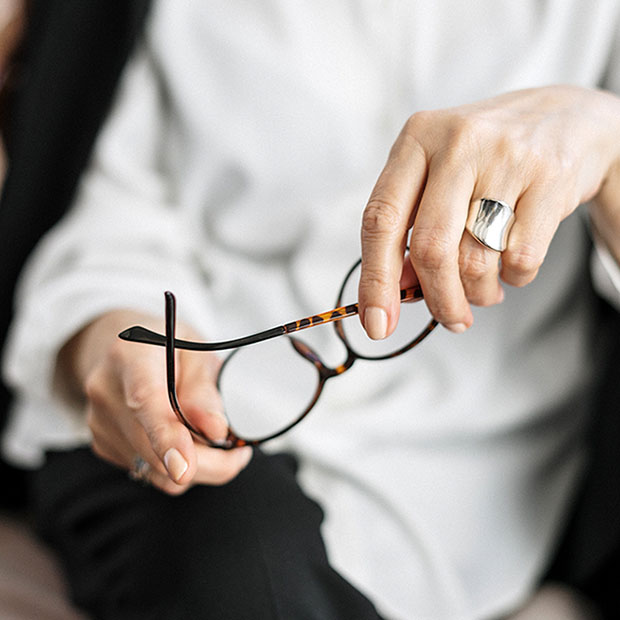Glasses Across History

Since at least 60 AD, people have been crafting tools to correct vision problems.
There are records of Roman philosopher Seneca magnifying text with a glass globe of water. Emperor Nero needed a magnifying emerald to see gladiator fights more clearly. We don’t have to resort to these kinds of rudimentary visual aids today, but it’s fascinating to look at how we got to the convenient glasses and contact lenses of the 2020s.
Medieval Calligraphy and Corrective Lenses
Monks in 10th century Europe were the next to advance corrective lens technology. It was necessary because they needed to be able to see tiny details to create their breathtaking illuminated calligraphy. They found transparent quartz fashioned into polished domes was very effective for this, and they called these devices “reading stones.”
It would take two more centuries before it occurred to someone to try attaching a pair of reading stones to a wearable frame to make them easier to use. The credit for this idea often goes to the Florentinian man Salvino D’armati, but we aren’t entirely sure.
Affordable Glasses for the Common Folk
For a long time, spectacles were only made out of very expensive materials like crystal, so they were a status symbol for the wealthy and far out of anyone else’s budget. But as literacy rates shot up across Europe after the 1440 invention of the printing press, demand for affordable reading glasses shot up too. Making them out of glass instead of crystal brought the price down to something many more people could afford.
Prescriptions and Folding Frames
Even though they were affordable and in frames, it still took another couple of centuries before glasses improved further. People had to carefully perch their frames on their noses or hold them up with a handle. Lenses made by glass-blowers couldn’t address someone’s specific refractive error. Imagine having to make do with wearing someone else’s glasses, because that’s what it was like for everyone back then. Things improved when temples were added in the 1700s, making the frames wearable and hands-free for the first time.
Benjamin Franklin contributed another improvement by inventing bifocals. Hinges were added around the same time, making glasses foldable for easier storage. By the early 1800s, eye doctors were making significant headway in tailoring glasses to individual patients’ needs. This included the invention of cylindrical lenses to correct astigmatism and Dutch eye doctor Herman Snellen’s “big E” chart, which standardized vision correction across the field of optometry.
Glasses Today
Thanks to all the innovations of the past, we get to enjoy precise prescriptions and comfortable frames that come in countless styles, shapes, and colors. And that’s only glasses! We can also choose from a wide array of contact lenses. Make sure to let us know if you experience any changes to your eyesight. It could be as simple as an out-of-date prescription, and we want our patients to enjoy the benefits of clear eyesight at all times!

